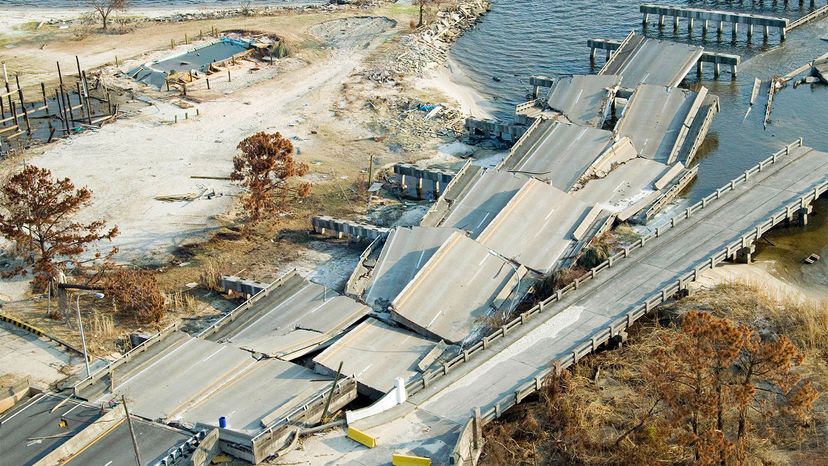Weather, Destroyer of Bridges

While wind can certainly induce destructive resonant waves, weather as a whole unleashes a host of destructive assaults on the bridges we build. In fact, the relentless work of rain, ice, wind and salt will inevitably bring down any bridge that humans can erect.
Bridge designers have learned their craft by studying the failures of the past. Iron has replaced wood, and steel has replaced iron. Prestressed concrete now plays a vital role in the construction of highway bridges. Each new material or design technique builds off the lessons of the past. Torsion, resonance and poor aerodynamic designs have all led to bridge failures, but engineers continually bounce back with innovations to solve design problems.
Advertisement
Weather, however, is a patient and unpredictable adversary. Cases of weather-related bridge failure tend to outnumber those of design-related failures. This trend can only suggest that we have yet to come up with an effective solution. To this day, no specific construction material or bridge design can eliminate or even mitigate these forces. After all, we're talking about the same forces that degrade whole mountain ranges and forge deep chasms in the earth. By comparison, a man-made bridge is nothing.
As with the ancient Incan suspension bridges, the only deterrent is continual preventive maintenance.